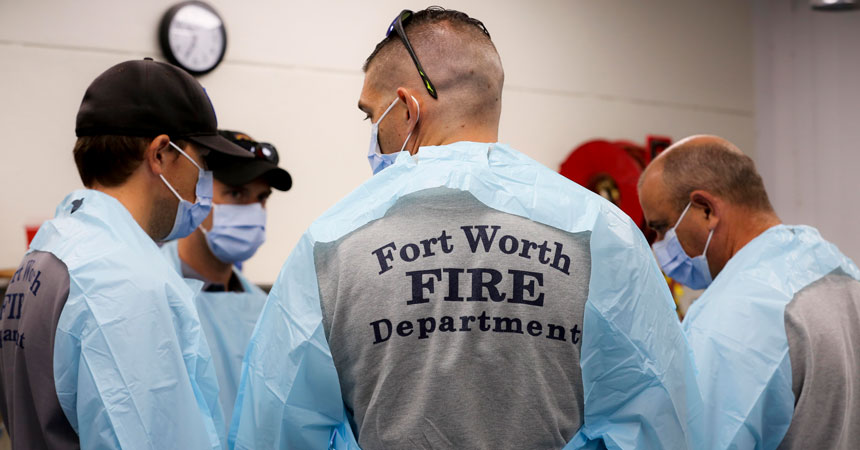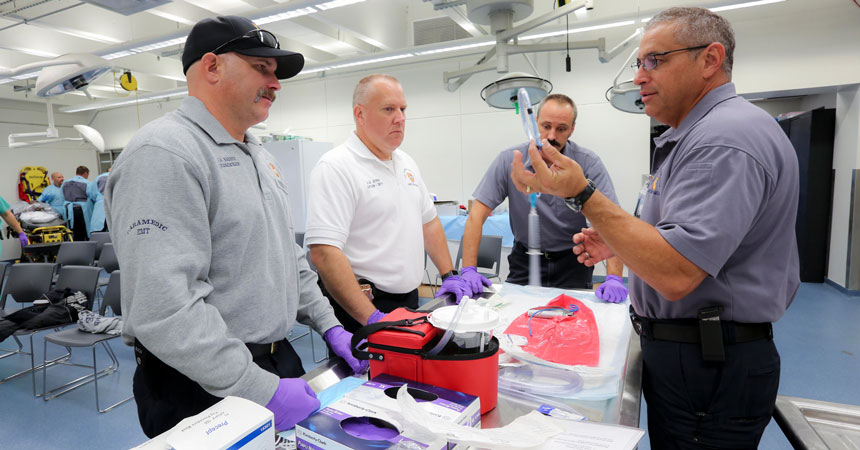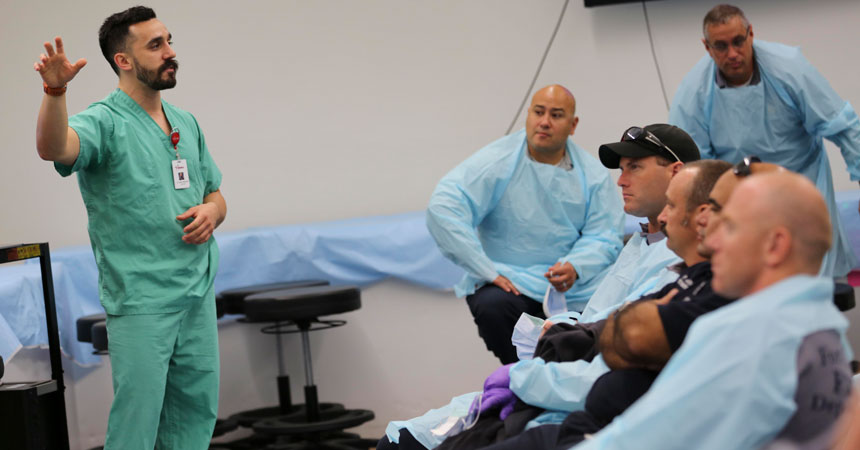Fort Worth paramedics practice procedures at UNTHSC Anatomy Lab
By Jan Jarvis
Ever so gently, Levi Hejl slipped a metal laryngoscope down the patient’s throat.
“Tip of the tongue, middle of the tongue, base of the tongue,” he said. “Centimeter by centimeter.”
The paramedics gathered around the patient watched closely as Hejl, Clinical Practice Coordinator for the Office of the Medical Director, demonstrated the life-saving technique.
In the world of emergencies where procedures must be performed quickly and confidently, this lesson in placing a breathing tube, known as intubation, provided a rare opportunity to practice it slowly and methodically.
The Willed Body Program at UNTHSC made it possible.
Four times a year, UNTHSC opens its Anatomy Lab to paramedics and EMTs for hands-on training, said Claudia Yellott, Willed Body Program Manager.
“We offer this opportunity free of charge because we know most of the cities do not budget for this type of training, but it is critical for the job they do,” she said. “We value the opportunity to improve patient care on all levels, and many times that starts in the field with the EMTs and paramedics.”
The Fort Worth Fire Department brings all of its new recruits to UNTHSC for training, Fire Lt. Matt Grant said. Over three days, 62 paramedics attended the program.
There are numerous benefits to working in the Anatomy Lab, said Dr. Brian Miller, Interim Associate Medical Director for the Office of Medical Director, which provides clinical oversight for Tarrant County paramedics.
“The benefits of being able to work on human bodies versus mannequins is huge,” he said. “It’s the difference between human tissue and plastic.”
Working on patients of different sizes is also beneficial.
“All people are not built the same and the variations in anatomy are huge when you’re working on someone,” Dr. Miller said. “With mannequins it is just one size fits all, but that’s not true in real life.”
For the recent course, paramedics took turns working on six willed bodies, performing procedures to control bleeding, release pressure in the chest cavity and stabilize a severe pelvic injury.
The paramedics also practiced intubation, which is often needed when someone stops breathing due to cardiac arrest, drug overdose or other causes.
The lab offers paramedics the opportunity to practice procedures that are high risk but aren’t needed as often, said Michael Drivdahl, Fort Worth Fire Department public information officer.
“This is extremely valuable training that many paramedics never get the chance to receive,” he said. “The Fort Worth Fire Department appreciates the opportunity to train our paramedics to provide a higher level of care to our citizens.”
Fort Worth paramedic Mark Driggers said that the lab allows him to practice important skills.
“Some situations are low frequency so we don’t get to do the procedures very often,” he said. “Here, we get the opportunity to work on actual humans in a controlled environment.”









Social media